Standalone VR headsets are all the rage these days. Options like the Meta Quest Pro, Quest 3, or Apple Vision Pro deliver exceptional experiences, all without requiring a connection to a PC to function.
And yet, the category of PC-driven VR headsets remains. So long as you have a powerful PC, you’ll be able to drive video output at more than double the resolution of some of these lower-powered VR headsets for the most immersive VR as possible. Here are the best options you can buy today.
Pimax Crystal
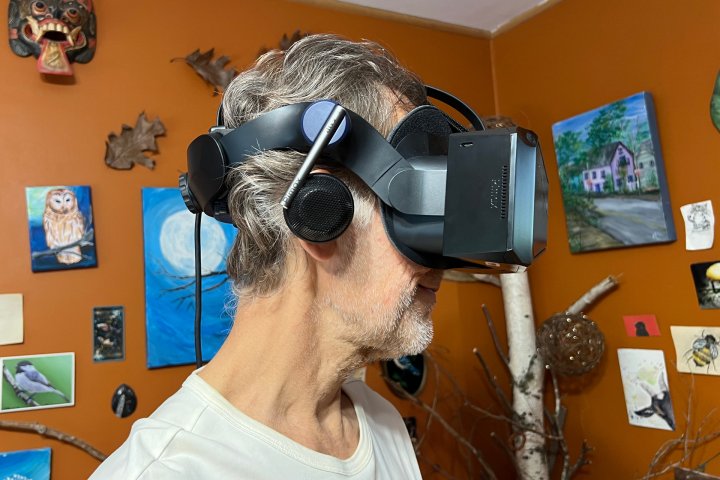
The highest-resolution PC VR headset made for consumers is the Pimax Crystal. It features displays with 2880 x 2880 pixels per eye, mini-LED backlighting, inside-out tracking of controllers and the headset, and eye-tracking with foveated rendering.
At $1,599, the Crystal comes complete, so you only need a Windows computer with a fast graphics card. If that sounds expensive, it might be because PC VR headsets like the Valve Index cost around $1,000. However, those systems require two controllers and at least two base stations for tracking, adding $679 to the bill.
I tested the Pimax Crystal and found it to be a reliable PC VR headset that offers crisp imagery, a wider-than-usual field of view, and overall great visual fidelity. The only downside is the weight and bulk.
Weighing just under 2 pounds, the Crystal is the heaviest headset on this list. The battery situated in the back for balance, plush facial interface, and deluxe head strap help reduce the pressure. Still, it’s a big, bulky headset. There’s even a standalone mode when needed, though the app library is quite limited currently.
HTC Vive XR Elite
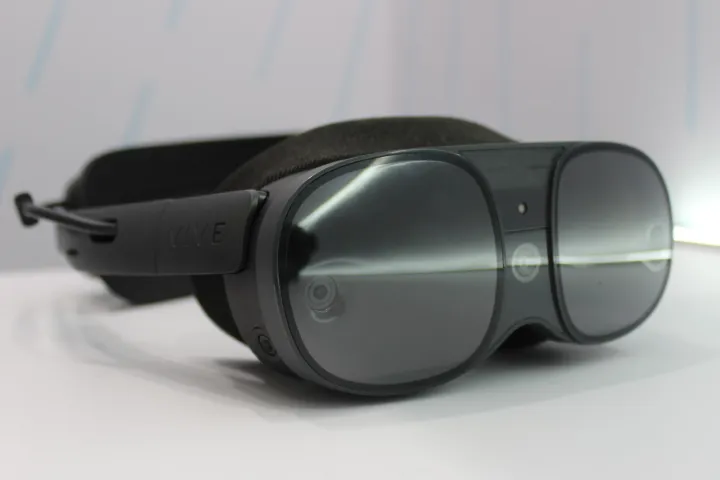
HTC’s Vive XR Elite is a standalone VR headset with a unique feature that makes it particularly interesting when connected to a PC — the back comes off so you can wear it like glasses. Since the headset is powered by the PC tether, there’s no need to worry about battery life when connected.
I got a chance to try this headset briefly and was surprised by how light it is in this configuration. Normally weighing 1 pound, 6 ounces, the Vive XR Elite drops 8.5 ounces with the rear battery removed, making it one of the lightest options available. You can also connect to a PC wirelessly.
The display resolution is 1920 x 1920 pixels per eye, not as sharp as the Pimax Crystal’s, but the pancake lenses with built-in diopter adjustment provides good clarity. Like the Crystal, the HTC Vive XR Elite has inside-out tracking and comes with controllers. With a $1,099 price tag, this is a compelling PC VR headset in its own right, but there’s even more to like about the Vive XR Elite. When using the standalone configuration, you get two hours of battery life to move around untethered and experience color-mixed reality gaming.
The Viveport library is large compared to Pimax, but smaller than that of the most popular VR platform, Meta’s Quest.
Meta Quest Pro
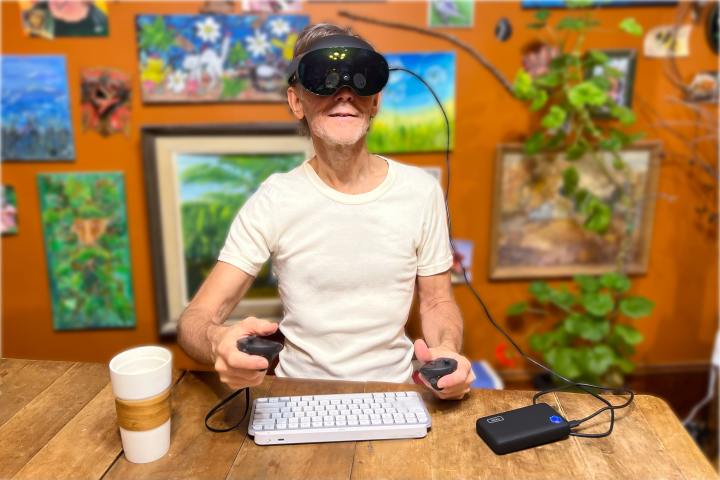
The Meta Quest Pro didn’t have a great debut at the surprisingly expensive launch price of $1,500. Meta realized its mistake and dropped the price to $1,000, making it a more attractive option.
You can connect your Quest Pro to a Windows or Mac laptop for spatial computing, but you’ll want to make sure you have a powerful PC for gaming. Meta has a reliable wireless option, but you can also use a high-speed USB-C cable to keep the battery charged.
The 1800 x 1920 display resolution is good for gaming and acceptable for productivity. Contrast and vibrancy are good thanks to mini-LED backlighting. The Quest Pro has a faster Qualcomm Snapdragon XR2+ Gen 1 chip, which is a bit speedier than the XR2 Gen 1 used in the Pimax Crystal and HTC Vive XR Elite.
The Quest Pro also has eye-tracking, foveated rendering, and a robust hand-tracking solution that works well with a growing number of apps and games.
I still prefer my Quest Pro over the Quest 3 since it’s the only mass-produced VR headset designed to float above my face, instead of pressing into it. It also comes with the best controllers on this list and a nice charging dock.
Meta Quest 3
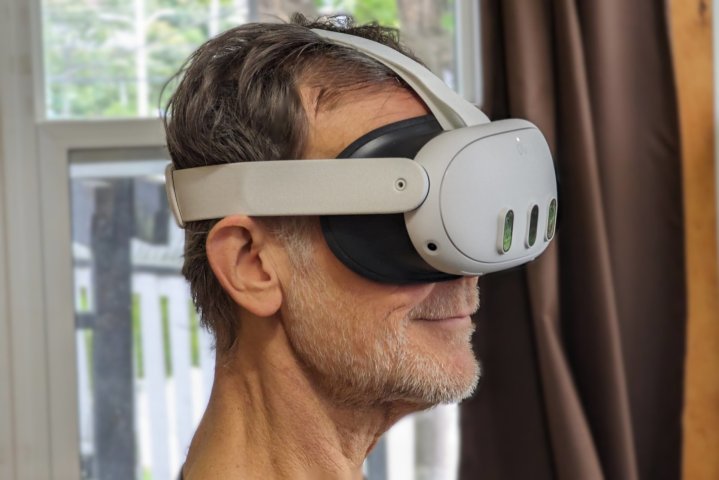
No modern VR headset list is complete without mentioning the amazingly affordable Meta Quest 3. While its standalone mode is more commonly used, you can connect the Quest 3 to your PC and enjoy the same Windows apps and SteamVR library available to other PC VR headsets.
The 2064 x 2208 display resolution beats the Meta Quest Pro and HTC Vive XR Elite, though the Quest Pro has an edge in dynamic range with its mini-LED backlighting.
I was amazed by the Quest 3’s incredible value. It handles everything you’d ever want from a VR headset: standalone VR, PC VR, mixed reality gaming, and spatial computing. While the Quest 3 doesn’t have the highest-resolution displays, it’s not far behind. It’s not the smallest or lightest headset, but the slim profile makes it comfortable, and there are plenty of accessories to customize the fit.
The $500 price isn’t the only reason the Meta Quest 3 is our top pick for overall best VR headset available — it’s just that good.
Bigscreen Beyond
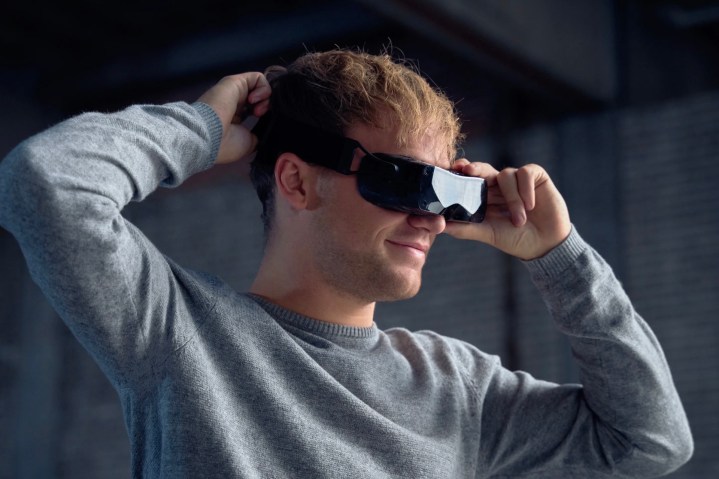
Bigscreen Beyond represents a clash of old and new technology. It’s the world’s smallest and lightest PC VR headset that boasts vibrant micro-OLED displays with a resolution of 2560 x 2560 pixels per eye, yet it requires external base stations for tracking.
The $999 price doesn’t include audio, base stations, or controllers. That puts your total cost at about $1,700. If you already own a Valve Index or older PC VR system that uses base stations, you might be able to keep the cost down.
The Beyond should be among the most comfortable VR headsets thanks to the remarkable five-ounce weight and custom facial interface. You need to get a scan with an iPhone with Face ID to place an order.
Despite being one of the most expensive headsets, the feature set is limited. The Bigscreen Beyond contains no battery, so plugging in is a requirement. It also lacks a mixed reality option and there’s no standalone or wireless mode.
Which PC VR headset is best for you?
With so many choices, it can be hard to decide between these great PC VR headsets. The Quest 3 is a great place to start from both a versatility and price standpoint. If you’re unsure of what to do, you can’t go wrong with the Quest 3.
However, if you don’t mind a bulky headset with limited standalone ability and no mixed reality, the Pimax Crystal has the best specifications for PC VR while costing less than a complete Bigscreen Beyond system.
There’s good reason to consider the Bigscreen Beyond, though. For example, if you already own an older VR system like the Valve Index, Pimax 8K, or HTC Vive headset, your base stations and controllers will work with the Bigscreen Beyond. That makes the price more attractive, on top of the fact that it’s tiny and lightweight.
And lastly, if you like the sleek styling of the Bigscreen Beyond, but want more versatility, the HTC Vive XR Elite has a glasses mode for PC VR, as well as a good quality standalone mode and mixed reality capabilities.
Editors' Recommendations
- One of the best gaming laptops you can buy is $600 off right now
- Best Meta Quest 2 deals: Save big on the VR headset today
- Best stylus for tablets and computers: 11 you can buy right now
- The best DDR5 RAM you can buy right now



